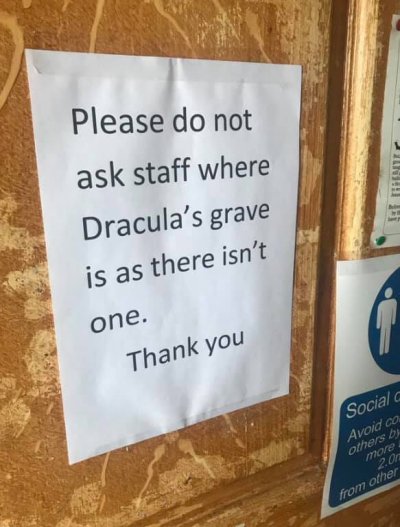Dracula is Irish! Awa' wi' ye! Thieving Scots!
Speculation, but interesting all the same:
An essay from Professor Elizabeth Miller, meanwhile, contended that Stoker may not have even known about the legend of Vlad Dracula, as there is no evidence of such in the writer's research notes for the book.
Born in Clontarf in Dublin back in 1847, one popular theory presented by Bob Curran, a lecturer in Celtic History and Folklore at the University of Ulster, Coleraine, suggests Stoker actually based his novel on the story of Abhartach.
A decidedly bloody and disturbing 5th century folklore legend, the story of Abhartach is every bit as terrifying as that of Vlad the Impaler albeit with one key difference: it took place in Ireland.
According to an early 17th century account from Dr Geoffrey Keating, Abhartach was a brutal Irish warlord who ruled over a small region of Ireland thought to encompass the town of Garvagh.
A ruthless and feared leader, Abhartach ruled through a mix of intimidation and bloodletting and was believed to be in possession of magical powers bestowed upon him by evil spirits.
Eventually, the townsfolk banded together and, together with a neighbouring chieftain by the name of Cathain, succeeded in killing Abhartach.
But the story takes a decidedly dark twist with the burial of Abhartach who was entombed standing up, as was the tradition for Celtic chieftain funerals at the time.
According to the folklore, Abhartach soon rose from the grave and began yet another murderous reign of terror, fuelled by the blood of his subjects, which he demanded by the bowlful in an attempt to sustain his energy.
Cathain soon returned and succeeded in killing the tyrant again but, once again, Abhartach returned, demanding more blood from the land of the living.
Suddenly aware he was facing off against a spiritual force beyond his mortal boundaries, Cathain took advice from a Christian saint who explained that a sword made of yew wood was required to vanquish Abhartach once and for all.
Even then further precautions would be required. Cathain was instructed to bury Abhartach upside down with a grant stone placed above his body to prevent further escape.
This time he succeeded in vanquishing the evil spirit, though some evidence of the dastardly deed remains.
Source:



